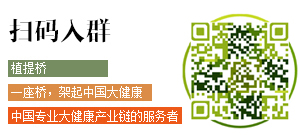Examining the herbal trend
时间:2007-07-29
浏览数:(768)
关键词:
The use of natural health products such as herbal remedies has been growing at staggering rates over the course of the past decade and is only now showing signs of slowing. NDMAC/ACNielsen HealthVision surveys have been tracking the trend: in 1996, 1 in 7 Canadians had used a herbal remedy; in 1997 this number jumped to 1 in 4; and in 1998, the number grew to 1 in 3. The most recent HealthVision survey indicates that this growth has levelled off at about 1 in 3 Canadians, mainly due to the fact that there were fewer new users coming on board in 1999 than in previous years. The dynamics of this consumer-driven trend has had a significant impact on the entire supply chain.
First, let's look at some user patterns. The long-term users (6 plus years), while fewer in number, tend to use a greater variety of products than new users thereby broadening the market. HealthVision '98 asked Canadians how long they had been using herbal remedies and which of the 22 products listed they have used. Across the board, more long-term users than new users indicated having used the listed products. In both categories, garlic, ginseng, echinacea, and chamomile were the most popular however, the numbers were significantly different: among the new users, echinacea was the most popular herbal remedy (43%), but among the long-term users, the most popular was garlic with 72 percent. Between 1997 and 1998, the product that increased most in popularity was St. John's Wort.
How consumers gather information has also changed significantly over the years. In a nutshell: a lot more people are talking and thinking more about herbal remedies today than they were even a year ago. Take echinacea users for example: in 1997 the highest single source of information consulted was a family member/friend with 33 percent; in 1998 the most popular answer was also family members/friends but with 47 percent. New users look to a greater variety of sources and do so in greater numbers than long-term users. The most significant differences between the two categories are that new users look more to pharmacists, TV/print/radio advertising, and newspaper/magazine articles than do long-term users, who look more to health books.
The changes in usage patterns are also reflected in users' shopping habits. In general, health food and natural health stores have seen a steady decline in the proportion of herbal users who are shopping in their outlets, whereas drug stores have seen growth. The 1999 survey also suggests that there is a growing loyalty among herbal users to one type of retail outlet with new users choosing drug stores as their main point of entry.
The explanation as to the changes in the shopping habits may be found by reflecting on the differences in the other usage patterns. New users have spurred the overall growth, tend to use the most popular products, and consult health professionals and media/advertising. Long-term users use a greater variety of products, some of which may be more readily available in health food and natural health stores, and rely less on in-store assistance and media influence. In the end, it is clear that pharmacy is winning over a disproportionate number of new herbal users.

First, let's look at some user patterns. The long-term users (6 plus years), while fewer in number, tend to use a greater variety of products than new users thereby broadening the market. HealthVision '98 asked Canadians how long they had been using herbal remedies and which of the 22 products listed they have used. Across the board, more long-term users than new users indicated having used the listed products. In both categories, garlic, ginseng, echinacea, and chamomile were the most popular however, the numbers were significantly different: among the new users, echinacea was the most popular herbal remedy (43%), but among the long-term users, the most popular was garlic with 72 percent. Between 1997 and 1998, the product that increased most in popularity was St. John's Wort.
How consumers gather information has also changed significantly over the years. In a nutshell: a lot more people are talking and thinking more about herbal remedies today than they were even a year ago. Take echinacea users for example: in 1997 the highest single source of information consulted was a family member/friend with 33 percent; in 1998 the most popular answer was also family members/friends but with 47 percent. New users look to a greater variety of sources and do so in greater numbers than long-term users. The most significant differences between the two categories are that new users look more to pharmacists, TV/print/radio advertising, and newspaper/magazine articles than do long-term users, who look more to health books.
The changes in usage patterns are also reflected in users' shopping habits. In general, health food and natural health stores have seen a steady decline in the proportion of herbal users who are shopping in their outlets, whereas drug stores have seen growth. The 1999 survey also suggests that there is a growing loyalty among herbal users to one type of retail outlet with new users choosing drug stores as their main point of entry.
The explanation as to the changes in the shopping habits may be found by reflecting on the differences in the other usage patterns. New users have spurred the overall growth, tend to use the most popular products, and consult health professionals and media/advertising. Long-term users use a greater variety of products, some of which may be more readily available in health food and natural health stores, and rely less on in-store assistance and media influence. In the end, it is clear that pharmacy is winning over a disproportionate number of new herbal users.

最新文章
- 营养健康全产业链展示汇聚!10月AAES2022等你闪耀深圳
- 媒体合作推文|8大奖项结果,150+创新品牌共同见证,第四届iSEE全球食品创新奖重磅揭晓!
- 【全新起航】AAES2022与时代共生——活下来,赢未来!
- FFNS2022倒计时15天!伊利、福建亲亲、无限极、和黄健宝确认参会,最新日程来啦
- 益生菌细分领域的黄金时代,SYNFORU®为你打造从头到脚360度的呵护
- 【思考·洞察】六月寄语:说说产业里“陆地粮”和“海洋粮”的认知差
- 精密发酵技术,植物肉市场的关键“突破”
- 植提桥
- 最新!FFNS2022延期至6月30日举办,品牌商免费参会,先到先得!
- 数据报告,Z世代对肉类替代品兴趣高,植物基的机会在冷冻、零食等类别



